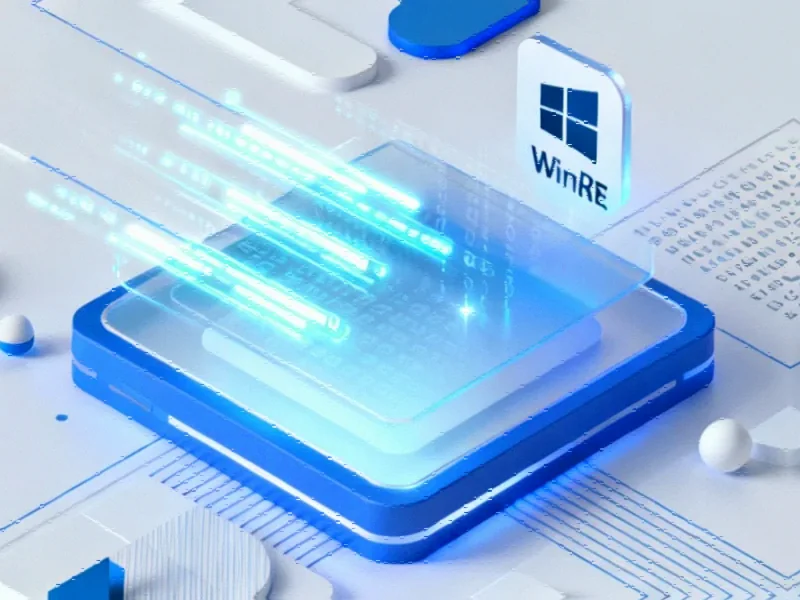According to Guru3D.com, Intel’s next-generation Battlemage GPU architecture is showing significant progress with the BMG-G31 chip appearing in internal driver files. The leak reveals four entries for the BMG-G31, including three Arc Pro workstation versions and one consumer card likely to become the Arc B770. Specifications indicate approximately 1.6 times more cores than the current B580 and 16GB of VRAM, positioning it against NVIDIA’s RTX 5060 Ti and AMD’s RX 9060 XT in the 1440p gaming segment. The same driver files mention “Nova Lake” CPU codenames, suggesting a potential synchronized 2026 launch timeframe with Intel’s next processor generation. With potential pricing around $350, the B770 could represent Intel’s most competitive graphics offering to date.
The $350 Sweet Spot Strategy
Intel’s rumored $350 pricing for the B770 targets the most contested segment in the graphics card market. This price bracket has historically been dominated by NVIDIA’s xx60 series and AMD’s xx600 series, representing the mainstream sweet spot where most PC gamers make their purchasing decisions. What makes this positioning particularly strategic is that both AMD and NVIDIA have largely completed their current-generation refreshes, creating an opening for Intel to enter with fresh competition. The timing suggests Intel has learned from its Arc Alchemist launch missteps, where delayed drivers and inconsistent availability hampered market impact despite competitive hardware specifications.
Three-Way Battle for Mid-Range Dominance
The emergence of a credible third competitor in the discrete GPU market could fundamentally reshape pricing and innovation dynamics. For years, the AMD-NVIDIA duopoly has allowed both companies to gradually increase pricing while delivering incremental performance improvements. Intel’s persistent presence forces both incumbents to either improve performance-per-dollar or risk losing market share. The specific mention of competing against RTX 5060 Ti and RX 9060 XT suggests Intel is benchmarking directly against next-generation products rather than current offerings, indicating they’re planning for a future competitive landscape rather than playing catch-up.
The 16GB VRAM Advantage
The reported 16GB VRAM configuration represents a significant strategic decision that could give Intel a meaningful edge in specific market segments. While both AMD and NVIDIA have been criticized for being conservative with VRAM allocations in mid-range cards, Intel appears to be embracing the “more is better” approach that resonates with gamers concerned about future-proofing. This becomes particularly relevant as game developers continue to push texture quality and resolution requirements higher. The substantial core count increase of approximately 1.6x over the B580, combined with generous memory, suggests Intel is prioritizing raw computational power over architectural efficiency—a different approach from competitors who often balance these factors more evenly.
Synchronized CPU-GPU Launch Strategy
The mention of “Nova Lake” CPU codenames in the same driver files points to a potentially sophisticated ecosystem strategy. By aligning GPU and CPU launches, Intel could create compelling platform-level value propositions that neither AMD nor NVIDIA can match individually. This approach mirrors what made AMD’s Ryzen and Radeon combinations attractive during certain market cycles. For system builders and OEMs, having synchronized architectures simplifies driver development, compatibility testing, and marketing messaging. The 2026 timeframe gives Intel ample opportunity to refine both architectures and ensure they launch with mature drivers—a critical factor given the driver-related challenges that hampered earlier Arc launches.
Potential Ripple Effects Across the Industry
If Intel delivers on the leaked specifications and pricing, the B770 could trigger broader market adjustments beyond just competitive GPU pricing. System integrators who have been hesitant to adopt Intel graphics due to early driver issues might become more willing to include Arc cards in pre-built systems, especially if paired with Intel processors. This could pressure AMD’s CPU division as well, since many system builders currently favor AMD CPU-NVIDIA GPU combinations. The workstation variants mentioned in the leak also suggest Intel is serious about competing in professional markets, where driver stability and certification matter even more than in consumer gaming. According to the detailed leak analysis, Intel appears to be building a comprehensive graphics strategy rather than just targeting specific gaming segments.
The Driver and Software Hurdle
While the hardware specifications appear competitive on paper, Intel’s ultimate success will depend heavily on software maturity. The graphics division’s biggest challenge hasn’t been designing capable hardware—it’s been delivering consistent driver performance across thousands of game titles and applications. Both NVIDIA and AMD have decades of driver optimization experience that can’t be replicated overnight. Intel must demonstrate significant progress in day-one game support, stability across diverse system configurations, and feature parity with technologies like NVIDIA’s DLSS and AMD’s FSR. The extended timeline to 2026 suggests Intel recognizes this challenge and is allocating sufficient resources to software development alongside hardware design.




